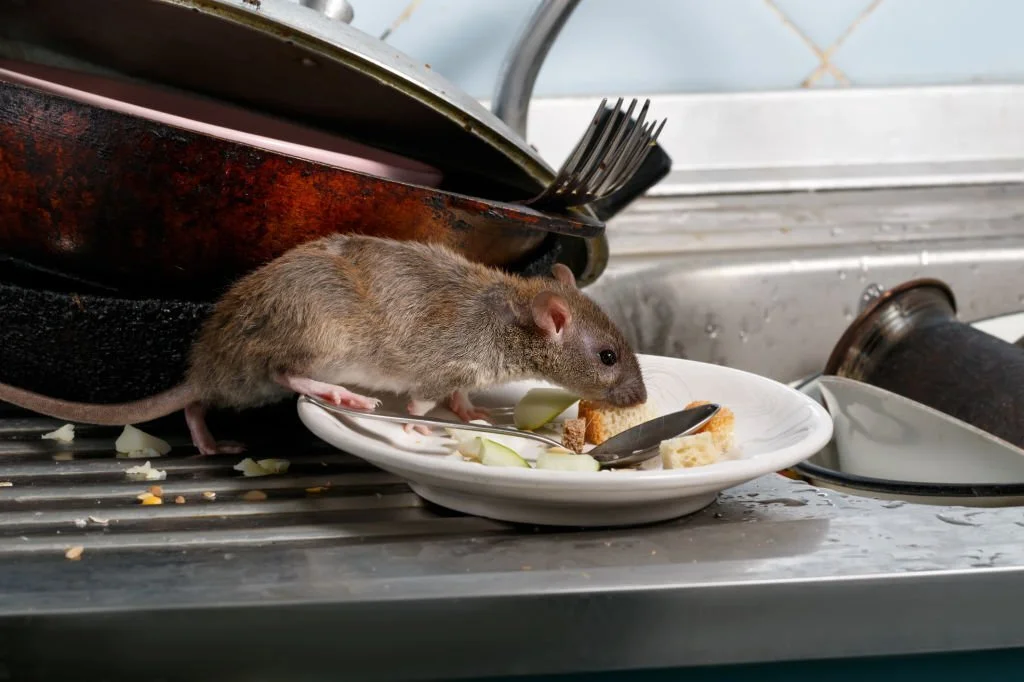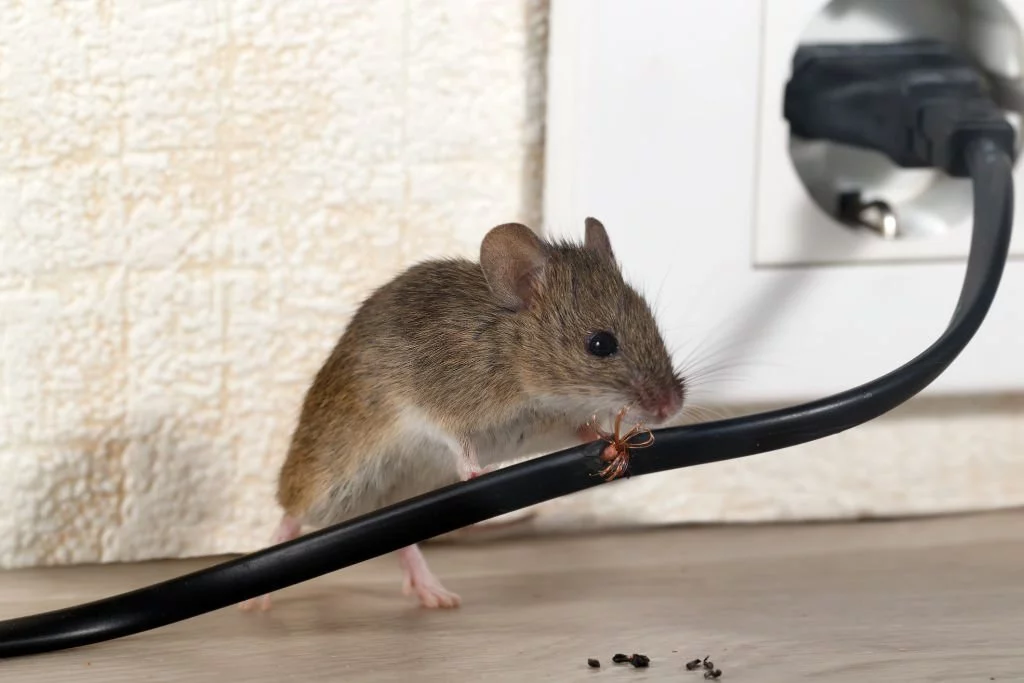Vancouver Rodent Control & Removal
Rodents, comprising rats and mice are small mammals with sharp incisors which allow them to gnaw through materials ranging from wood to certain metals, leading to structural damage, electrical outages from wire chewing, and potential fire hazards.
In Vancouver, a city known for its proximity to water sources, rodent populations have been a persistent concern.
According to a recent survey, Vancouver ranks among the top Canadian cities with significant rodent infestation problems, highlighting the importance of consistent and effective rodent control.

Both rats and mice are types of rodents. They are just two of the many species that fall under the category of rodents.
Call us for Rodent Trapping
Why Do You Need Rodent Control?
Rodents can cause a surprising amount of damage in and around homes and buildings. Here are some of the main ways rodents, including rats and mice, can be destructive:
Chewing on Wires: Rodents will chew through electrical wiring which can cause fires or power outages. They can damage appliances, computers and other devices by chewing on cords.
Contaminating Food: Rats and mice contaminate food supplies by leaving droppings, urine and pathogens behind. This can cause food poisoning and serious health risks.
Spreading Disease: Rodents spread dozens of diseases through their urine, droppings and bites. These include salmonella, hantavirus, leptospirosis, rat-bite fever and plague.
Damaging Structures: Mice and rats burrow and gnaw through walls, floors, doors, insulation, piping and other structural components, weakening them over time.
Ruining Possessions: They will chew on furniture, books, clothing, shoes and many other belongings, causing costly damage.
Crop Destruction: Rodents consume and contaminate large volumes of crops both pre and post-harvest, resulting in major economic losses.
Attracting Other Pests: Rodents can attract other pests, such as cockroaches, ants, and termites. These pests can also cause damage to property.
Call PPS for Rats & Mice Removal

Due to all the above-mentioned damages rodents can cause, monitoring their moves and controlling rodent populations on your property can help to mitigate these risks.
Employing rodent control companies that provide rats and mice control services, isn’t just about removing a nuisance; it’s about safeguarding human health, protecting one’s home or business, and preventing potential financial burdens.
Perfect Pest Solutions rodent removal experts can help you get rid of your rodent problem before it’s too late.
Why Choose Our Humane Rodent Pest Control Services?
There are many reasons why it is important to use professional rodent control services. Here are some of the most important ones:
Expertise: Our professionals have extensive training and knowledge on rodent behavior, biology and the most effective control methods and products for different situations. DIY attempts often fail.
Safety: Rodenticides and traps can be dangerous if used incorrectly. PPS experts know how to place and apply them in the safest manner in secure, out-of-reach locations.
Investigating the Source: Our technicians will inspect extensively to find all rodent entry points and nesting sites, sealing them up for prevention. DIY efforts can miss key areas.
Avoiding Recurrence: PPS pest control company monitors and makes adjustments to ensure rodents don’t return. DIY treatment may not completely eliminate them.
Protecting Against Diseases: PPS professionals use precautions and properly dispose of droppings and carcasses, protecting you from hantavirus and other illness risks.
Warranties: We at PPS will warranty our work, and returning at no charge if problems restart.
Saving Time: Our pest control technicians have advanced tools, equipment and efficient processes that get the job done faster.
Preventing Structural Damage: With early intervention, our pest professionals can stop rodents before they cause major damage to homes.
Our Rodents, Rats & Mice Removal Service Area
- Vancouver
- North Vancouver
- West Vancouver
- Burnaby
- Coquitlam
- Port Coquitlam
- Port Moody
- New Westminster

Frequently Asked Rodent Control Questions
First of all you must know that both rats and mice are considered as two species of rodents with some differences in the following characteristics:
Size
Rats: Generally larger than mice. A typical adult rat might measure between 9 to 11 inches in body length, not including the tail.
Mice: Smaller in comparison. Adult mice usually measure about 3 to 4 inches in body length, excluding the tail.
Tail
Rats: Have thicker, scaly tails. The tail length might be close to or less than their body length.
Mice: Possess thin, hairy tails that are typically as long as or longer than their bodies.
Ears
Rats: Have relatively smaller ears compared to their head size.
Mice: Exhibit larger, more prominent ears in relation to their head size.
Habitat
Rats: Depending on the species, rats might prefer to nest underground, in burrows, or at elevated locations. For instance, Roof rats are known to nest in higher places like trees or attics, while Norway rats are more ground-oriented.
Mice: Often nest in hidden areas close to food sources, like wall voids, storage boxes, or under appliances.
Rodents, including rats and mice, can pose significant threats to your property. Their presence is not only unsightly but can lead to various forms of damage, including:
- Structural Damage
- Electrical Damage
- Insulation Damage
- Plumbing Issues
- Contamination
- Landscaping Damage
- Ventilation System
- Damage
- Property Value
Rodents are adept at finding hiding places in homes that provide them with warmth, safety, and proximity to food sources. Common hiding places for rodents in a house include:
- Walls and Wall Voids
- Attics
- Basements
- Behind Appliances
- Closets
- Under Sinks
- In Pantries or Cabinets
- Garages
- Under Furniture
- Between Floors
- Ventilation and Duct Systems
- In Clutter
Pest control companies use a variety of methods to get rid of rodents, depending on the type of rodent and the severity of the problem. Here are some of the methods that pest control companies may use:
- Setting Traps
- Sealing up Entry Points
- Using Rodenticide
- Using Fumigation
- Using Ultrasonic Devices
